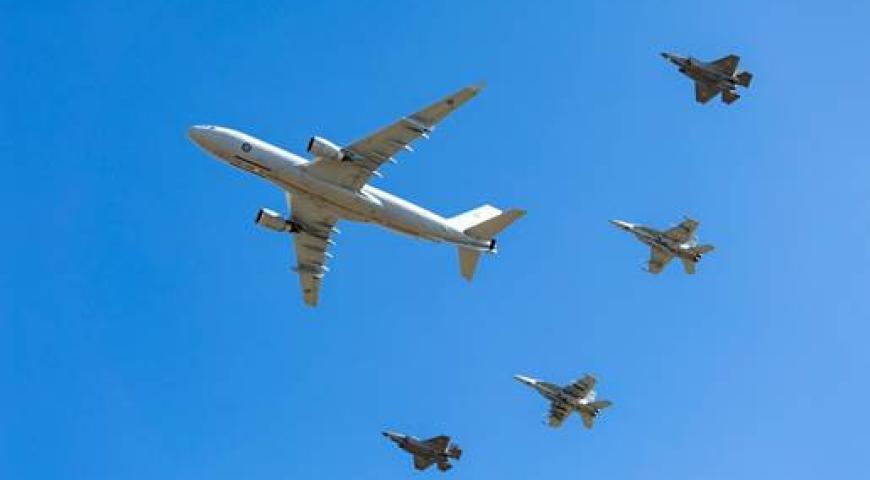Gender in military operations is currently a highly contested concept. Argument about quota-based female representation, and generic assertions of ‘female capability’ in military operations, has diverted the public and much of the ADF away from understanding the place of gender in the normal planning process for information-led operations. This does not need to be the case.
The argument flows like this: population-focussed effects need to account for differences across the target population. To paraphrase Corbett, to be successful, military power must affect the area where people live,1 so all effects are directed to a population at some level. Intelligence analysis must therefore disaggregate by gender (and other major groupings such as age, education or economic status) to understand if there are population differences which are relevant to the intended effect. Thus gender is fundamentally relevant to any analysis of the human terrain; it is not a specialist input but a standard element of information-led operations. One could go a step further than current gender doctrine and observe that, as a social construct, gender is not simply relevant to protecting the civilian population but can be exploited kinetically and non-kinetically to achieve population-centric effects.
Making ‘gender’ a specialist input by the Gender Advisor risks making one staff officer responsible for collecting data, analyzing the threat and developing COAs to achieve desired effects for half or more of the target population. Instead, ongoing intelligence analysis that disaggregates information by gender to produce a threat assessment, from which normal planning would then develop responsive COAs, is needed. This is an intelligence function, not an advisory one.
In a recent example from peacekeeping operations in South Sudan, where the ADF has deployed a number of personnel to the UN force under Operation Aslan, a sudden increase in the rape of women and girls was reported by Medecins sans Frontieres (MSF) in the vicinity of Bentiu town in December 2018.2 The UN later verified at least 134 cases of rape and gang rape, and another 41 cases of other sexual or physical violence against women and girls, within a 30km radius of Bentiu between September and December 2018. Investigators found a level of organization in the violence, and that it was largely perpetrated by armed men belonging to government forces, or to militias associated with First Vice President and opposition figure Taban Deng.
A robust intelligence analysis would incorporate these MSF reports into the population-focussed threat assessment, in the same way that an increase in armed clashes is typically identified, analysed and incorporated into the threat assessment. Operational and tactical level planning would then address the changed threat assessment, while strategic level analysis would identify the implications for the mission of the involvement of government and militia forces in organized violence against civilians. In this case, in the author’s opinion, it is now becoming apparent that the December violence was a key early indicator of the weak prospects for successful implementation of the September 2018 revitalised peace agreement, with fundamental implications for the medium term future of the mission – it demonstrated the weak ability of the Kiir government to control its own forces (or more likely, in concert with government denials that rapes had occurred, deliberate policy to allow the continuation of violence in other forms following the revitalized agreement), and the weak commitment of the Taban Deng faction to a peace agreement in which they gained little politically.
Rather than ‘just’ being evidence of persistent lawlessness, the December rape crisis in South Sudan confirmed the criticality of gender-specific indicators of population security in military assessment, and its widespread nature and links to government forces and associated militias reflected directly on the main security actors’ commitment to peace. It represented a change in the focus of violence following the revitalised peace agreement, not a decrease in it. If reports of rape are assessed instead as a law enforcement problem, or as isolated incidents, then this significance for the operational environment is lost, and so are effective planning opportunities. This is relevant across all operations and environments, not just those, as in South Sudan, where the mission has a specific mandate to protect women and girls from sexual violence.
From a military perspective, successful integration of gender is not just, and not always, about linking military activities to the risk of rape, as has been publicly criticized – although that can be specifically tasked as the mission, and is also relevant to the risk of losing support in population-centric influence strategies. It’s about understanding how gender influences effects in population-centric strategies, and it begins with its robust incorporation into the intelligence analysis of the operational environment.
1 ‘Since men live upon the land and not upon the sea, great issues between nations at war have always been decided – except in the rarest cases – either by what your army can do against the enemy’s territory and national life or else by the fear of what the fleet makes it possible for your army to do:’ Sir Julian Corbett, Some Principles of Maritime Strategy (London: Conway Press, 1972; originally London: Longmans Green, 1911), p 14.
2 UNMISS/OHCHR, Conflict-Related Sexual Violence in Northern Unity, September-December 2018, 15 Jan 19, www.ohchr.org/Documents/Countries/SS/UNMISS_OHCHR_report_CRSV_northern_Unity_SouthSudan.pdf, see Executive Summary.
Defence Mastery
Social Mastery
Please let us know if you have discovered an issue with the content on this page.
Comments
Start the conversation by sharing your thoughts! Please login to comment. If you don't yet have an account registration is quick and easy.




